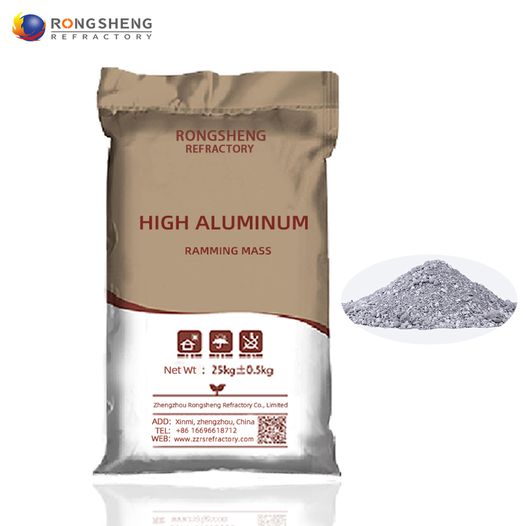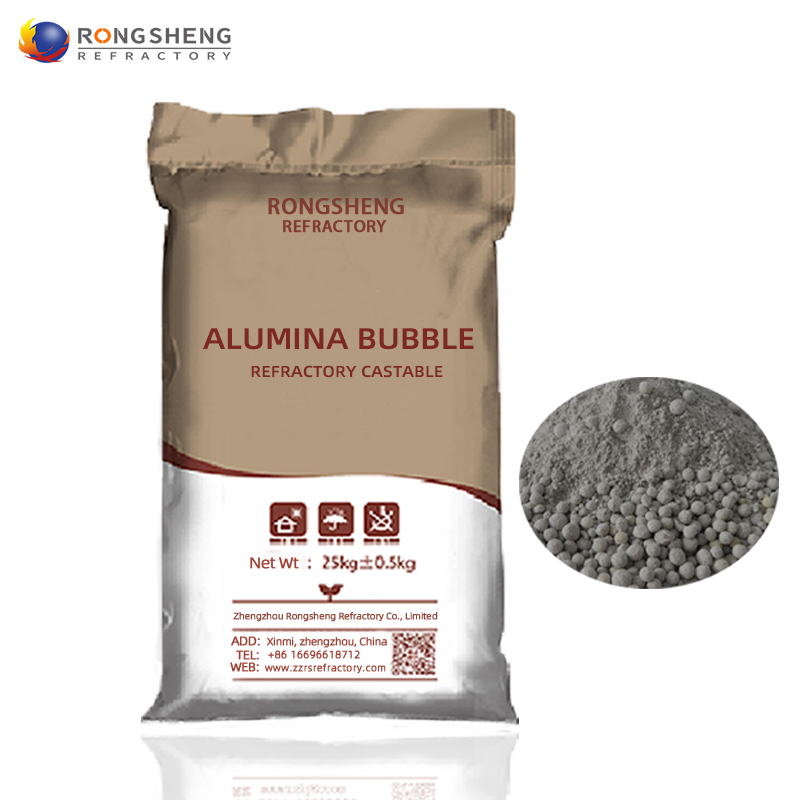A diferença entre concretos e materiais de compactação
Castables and ramming materials are both unshaped refractory materials. Castables and ramming materials are made of various aggregates, powders, and binders in a reasonable proportion. They are both unshaped refractory materials. Although they are the same type of amorphous refractory materials, they differ greatly.
What are the differences between castables and ramming materials?

Construction methods are different
Massa de força is constructed by ramming and hardened by heating. It is usually formed directly or after adding liquid by pounding (manual ou mecânico) or vibration and hardens when the temperature is higher than room temperature.
Castáveis are constructed by pouring and can harden without heating. It is mainly delivered in dry form and is used after mixing with water or other liquids. Geralmente, vibration casting, non-vibration (Auto-fluxo) fundição, batendo, spraying, or tamping when necessary are used to form and harden without heating.
Different material classifications
Ramming materials are classified according to materials: alta alumina, argila, magnesite ramming mass, dolomite, zircônio, e materiais de compactação refratários de carboneto de silício-carbono.
Castables are classified by material: 1. According to porosity distribution, there are two types: dense concretos refratários and insulating refractory materials with a porosity of not less than 45%; 2. According to binders, they are divided into hydraulic bonding, chemical bonding, and cohesion and combined with refractory castables.

Different applications
Castable is the most widely produced and used unshaped refractory material at present. It is mainly used to construct various heating furnace linings and other integral structures. It is used in heavy-duty furnaces and heating equipment in metallurgy, petróleo, indústria química, materiais de construção, energia elétrica, and machinery industry. High-quality shock absorbers are widely used in metallurgy, materiais de construção, and non-ferrous metals. Smelting, químico, maquinaria, e outras indústrias de manufatura. Products can also be used in smelting furnaces.
O material de compactação é um material a granel feito de carboneto de silício, grafite, e antracito calcinado eletricamente como matérias-primas, misturado com vários aditivos em pó ultrafino, and fused cement or composite resin as a binding agent. É usado para preencher a lacuna entre o equipamento de resfriamento do forno e a alvenaria ou o material de enchimento para a camada de nivelamento de alvenaria. The ramming material has good chemical stability, resistência à erosão, e resistência ao desgaste.
 Fábrica de Refratários Rongsheng
Fábrica de Refratários Rongsheng
WeChat
Escaneie o código QR com o wechat